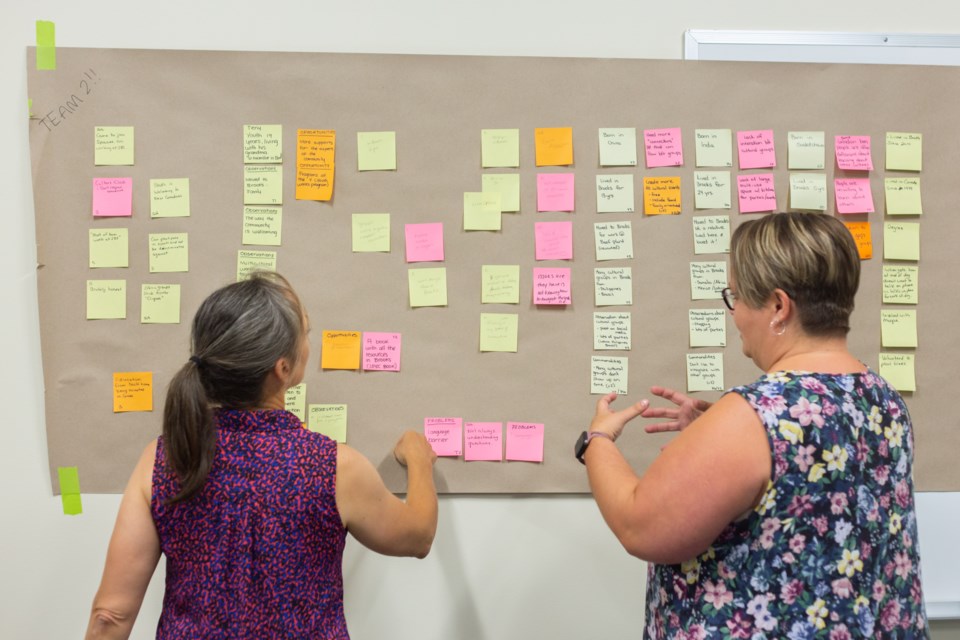Housing, addiction, and mental health may be universal social problems, but the distinct challenges they bring to individual villages, towns, and cities aren’t easily addressed by blanket solutions.
Through extensive consultation and collaboration, The Social Impact Lab Alberta aims to help communities design social initiatives that suit their needs and capacities.
“We are not social workers. We are designers,” said Monique Blough, program director for The Social Impact Lab Alberta.
“What makes us different is that we bring a cross-collaboration lens to the work, in addition to a prevention lens.”
Because they are removed from front-line work and the everyday demands of immediate crises, SIL’s design team has the space to “look at the broader picture and to think about how we can bring many of these organizations that are boots-on-the-ground together to think about solving those bigger issues at the top level,” Blough said.
SIL was founded in 2018 by United Way of Calgary and Area and received a $1.75 million grant in 2022 from the Government of Alberta to expand its work province-wide.
After combing through data and mapping Alberta communities against their social health determinants and “adaptive capacity to innovation,” the SIL team shortlisted locations where they felt a design-led approach would be well-received, including Athabasca.
“The community of Athabasca has been so warm and welcoming,” said Kelsey Brown, project designer with The Social Impact Lab Alberta.
“Someone shared with me when I was in Athabasca just a few weeks ago that they really appreciated our approach. That we came in, not saying, 'here's what we need to do and here are the different ways you can fix your community,' but coming in first to listen and to hear the community out and really let them lead the way,” Brown said.
Although SIL identified possible sites for design labs through its research, “we don't go into a community unless we're invited,” Blough said.
“We operate from a space of social licence or from a place of trust,” she said, “We are not the smartest people in the room, we just have a way of creating space for great things to happen.”
The co-design process in Athabasca started in April by interviewing residents and pinpointing major concerns for the community. At workshops held in August, SIL brought together representatives from local government, businesses, non-profits, youth, and interested citizens to refine areas of focus and brainstorm next steps.
“The topic that we have landed on for Athabasca is that there is a perceived lack of accessible and affordable social supports for people. And so, the community wants to see supports for people around mental health, housing, and transit,” Brown said.
Beginning on Oct. 19, SIL will host nine monthly sessions in Athabasca where they will share skills and strategies for human-centred design with collaborators and figure out what the real problem is behind the community-chosen topics, Brown said.
“Then we will do some innovation and ideation to come up with new ideas to problem solve. We will create prototypes. We will test those ideas with the community. And then at the end of all of this, we'll come up with one idea that we will make real in the community of Athabasca.”
While most of the SIL team have design backgrounds, Brown came to the project from front-line social work.
“I'm learning all the tools and skills, but I think there is an advantage in coming from seeing how the systems work and how we often try these band-aid solutions in non-profits because that's what we're funded for. And they don't always work,” she said.
“It's exciting to see these opportunities and to do this work given my background, having seen what doesn't work and what we've tried over and over that needs some revamping or some innovation behind it.”


